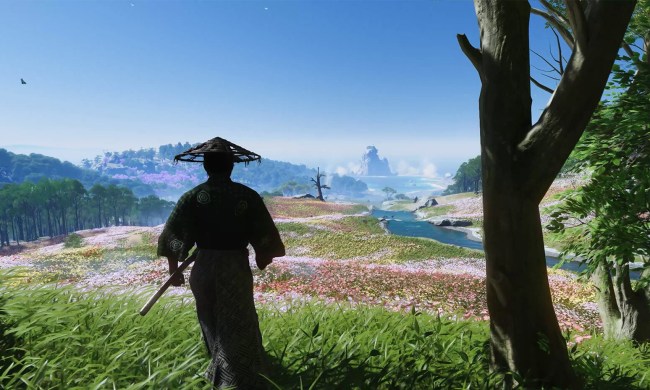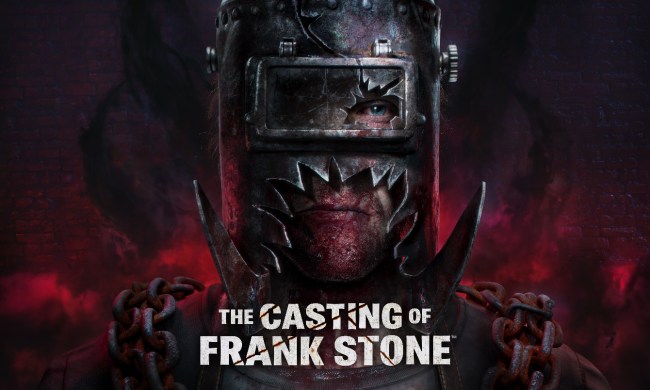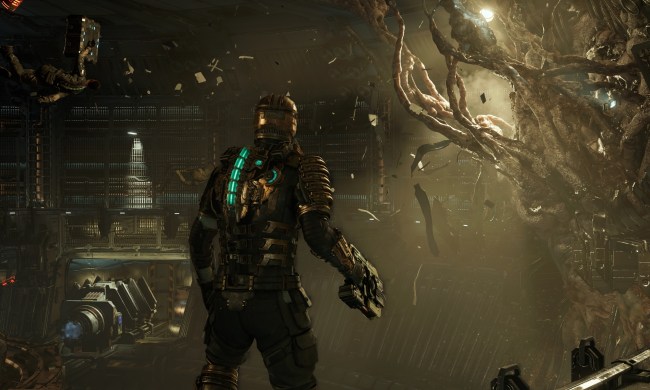“The original Deadly Premonition was intriguing, but broken. The Director’s Cut fixes a lot of that, but keeps the weirdness.”
- Engrossing story
- Not much else out there like it
- Many past issues have been addressed
- The audio is occasionally off synch
- Awkward NPC interactions
- Driving is improved, but not great
“There’s definitely something in this town. Do you feel it, Zach? My coffee warned me about it.”
Francis York Morgan, Deadly Premonition’s affable FBI special agent, is decidedly idiosyncratic. As a criminal profiler, he tracks killers in excessively brutal or disturbing cases, taking special interest in the murders of young women. He conveys his observations, hunches, and questions out loud to his imaginary friend, Zach. He is nonchalant almost to the point of ambivalence. And boy howdy, does he love his coffee.

So of course Swery decided to release a Director’s Cut.
Welcome to Greenvale
The fact that a Director’s Cut of Deadly Premonition was ever something Swery was interested in isn’t surprising. Cult classics often warrant (or at least inspire) some form of re-visitations – even Lynch couldn’t leave Twin Peaks before he shot Fire Walk With Me to cap the series on a particularly horrifying note. Deadly Premonition’s candidacy for re-release is obvious just by looking at its visuals, oscillating between “Dreamcast quality” to “budget current-gen release.” So what makes Swery’s re-take a Director’s Cut, exactly?

As before, The Director’s Cut opens with a cutscene depicting a somewhat graphic discovery in a forest, the body of a young girl hanging from a tree. The scene is 98-percent unchanged from the muddy 360 edition, but it’s that two-percent that makes all the difference. With a close-up shot the corpse suddenly pops with detail, a gaping wound in the girl’s abdomen now much better defined than the comparatively abstract mess of pixels and aliasing it used to be. Then as the camera cuts back the graphics revert to their original state – a knowing wink from Swery, and certainly an intentional one.
Less cruel device
This sort of bait-and-switch thankfully doesn’t extend to the game proper, but if you’ve played Deadly Premonition before the change is night and day. Environments in particular feel revived with a crisp definition that could almost be mistaken for new. York and the varied oddball citizenry of Greenvale (another narrative element heavily inspired by Twin Peaks) also look slightly better, though the effect on character models is less pronounced, mostly due to a shift away from the more garish lighting of the original release.

Extra for enemies killed

Not that Deadly Premonition has ever been, or should be, known for its combat. The otherworldly enemies react with the same near-powerless response to nearly all of your firearms – and it should be noted that The Director’s Cut is both easier than its predecessor and retains all of the infinite ammo weapons that can be unlocked just by completing sidequests. Only the on-rails chase segments are as weirdly harrowing as ever, as you waggle the left analog stick back and forth to make York sprint away from an unnerving, invincible killer.
Driving actually plays quite a heavy role as well, forcing you to manually travel to various locations in and around Greenvale. The reason here is simple: like Hideo Kojima’s Codec conversations in the Metal Gear series, Swery wants you to take in the wonderfully strange conversations York has with Zach, discussing ‘80s pop cultural artifacts and providing insight into the agent’s magnetically unconventional personality.

Maybe the improved vehicle controls are something of a salve, if not an incentive. In the original game, driving was like trying to steer a shopping cart with greased wheels that’s skidding down worn-out asphalt littered with ball bearings. The cruiser you’ll likely be stuck with throughout your 20ish hours in Greenvale still maxes out at a whopping 50 MPH or so, and while it’s still a touch finicky, the improvement is noticeable. And yeah, you can with some difficulty acquire a fast travel item to skip all the driving segments, but if you do, you’re kind of missing the point.
Conclusion
In case you haven’t already figured it out, Deadly Premonition is the kind of game that – mechanics aside – you play because it’s just too damn engrossing to put down. What seems at first to seem to simply be Twin Peaks: The Game gradually finds its own identity, often due to a sense of fascinating Japanese appropriation to American culture (and whose Lynch impression feels somehow more genuine than the Western-developed Alan Wake’s generic sensibilities).
Deadly Premonition’s appeal is in its details, both goofy and creepy: the way that York taps his finger on his chest when he’s talking to Zach (which, if it wasn’t clear, is Swery’s meta way of addressing the player), his awkward interactions with NPCs, how you rarely hear more than five or six tracks on the soundtrack, and the game’s amusing tendency to repeat small segments of them over and over during the game’s lengthy cutscenes.
Alternately, there is the mystery at the heart of York’s case, full of oppressive dread and dealing in themes that have arguably been left mostly untouched in Western games since Phantasmagoria, to say nothing of the punctuated moments of truly disturbing violence peppered throughout. As far as The Director’s Cut additions here, I’ll just say they add another layer to what was originally more straightforward and will likely make you long for more. Foibles aside, if you haven’t been to Greenvale, this is a must play. If you have, it’s still worth the return trip.
This game was reviewed on a PlayStation 3 using a copy provided by Rising Star Games.



